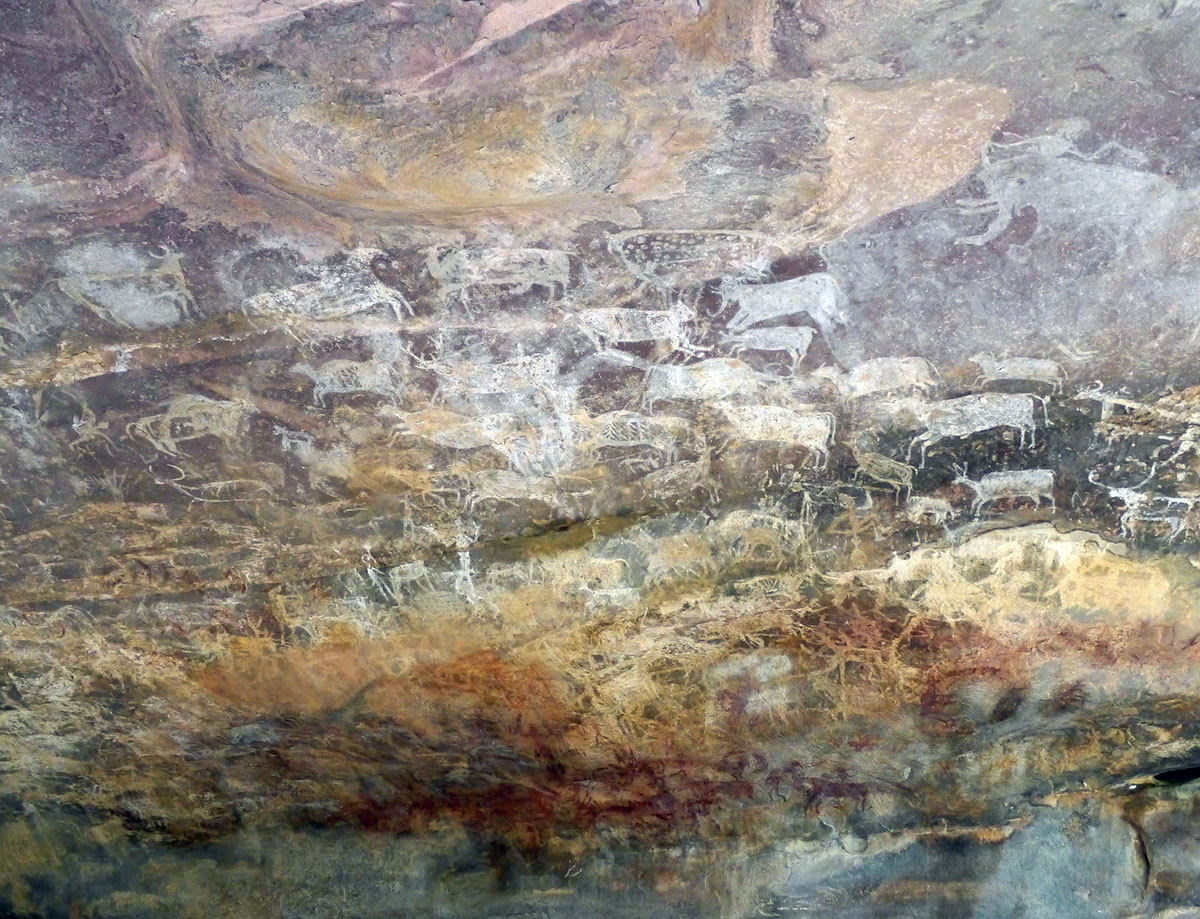ARTICLE
Zoo Rock, Bhimbetka
One of the most densely painted among the Bhimbetka rock shelters in the Raisen district of Madhya Pradesh, the surface of the Zoo rock has several layers of Prehistoric paintings illustrating animals of different sizes. It is also known as Bhimbetka Shelter III C-50 and is one of the most prominent among the hundreds of cave paintings in Bhimbetka, which are generally considered to be the earliest examples of art in South Asia.
The Indian archeologist Vishnu Sridhar Wakankar discovered this rock shelter, among many others, in 1971–72, naming it after its depictions of animals such as sambar deer, elephant, leopard, buffalo, rhinoceros, jackal, bear and boar. The paintings range from a few centimetres to life-size and larger, reaching up to four metres tall.
In total, up to 250 distinct species of animals are depicted on the Zoo rock, along with human figures, birds, enclosures and some incomplete figures. Scholars suggest that some of these paintings could be depictions of the gestation cycles of different animals. In some instances, the paintings depict the moments right before an animal is hunted or when it is caught unawares by hunters, suggesting an attempt at narrative rather than mere documentation.
While not much is known about the purpose or motivation for painting these rock shelters, scholars have used them to gain a better understanding of the social and cultural environment in the Prehistoric period. Apart from the Zoo rock, the Boar rock and the central Auditorium cave are well-recognised sites at the Bhimbetka rock shelters, which were marked as a UNESCO World Heritage Site in 2003.
Bibliography
Our website is currently undergoing maintenance and re-design, due to which we have had to take down some of our bibliographies. While these will be re-published shortly, you can request references for specific articles by writing to hellomapacademy@map-india.org.







